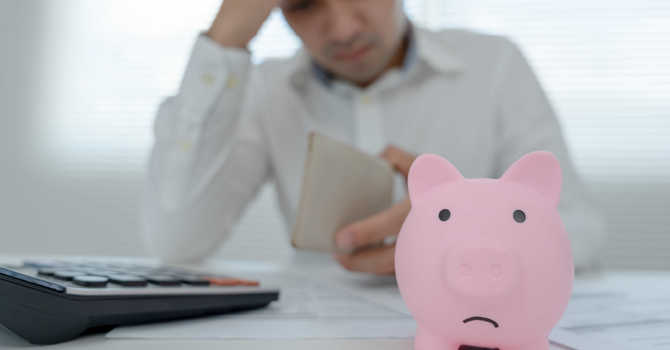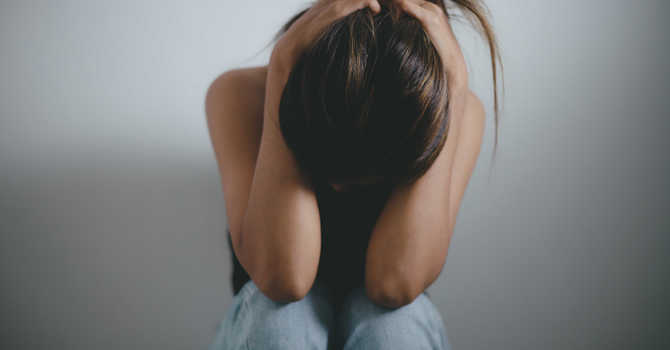
Depression is a complex condition that can make it very hard to live. It has different levels of severity, many causes, and multiple symptoms. There are also several types of depression.
Defining Depression
Depression is a mood disorder that can cause a range of emotional, psychological, and physical symptoms for several weeks, months, or years.[1]
Levels of severity
Depression has three levels of severity: mild, moderate, and severe.[2]
· Mild depression impacts daily life to some degree.
· Moderate depression has a major impact on daily life.
· Severe depression makes it almost impossible to get through each day.
Difference between depression and sadness
Sadness is a natural reaction to disappointments, losses, problems, and other difficult experiences. It fades relatively quickly and has minimal disruption on daily living. Depression is a mental health condition that affects people’s mood as well as the way they understand themselves and the things around them.[3]
Difference between depression and grief
Grief and depression share many of the same characteristics, so it can be hard to tell the difference between the two. But depression is an illness while grief is a normal response to loss. With grief, sadness comes and goes so it’s possible to enjoy things and look ahead to the future. In contrast, depression causes persistent sadness, loss of enjoyment, and hopelessness about the future.[4] Complicated grief can, however, lead to or worsen depression.[5]
Causes of Depression
The causes of depression are not fully understood but several factors contribute to its development.[6]
· Changes in neurotransmitter levels in the brain
· Environment
· Genetics
· Health conditions
· Psychological issues
· Social factors
Types of Depression
Nine common types of depression are major depression, depressive psychosis, situational depression, persistent depressive disorder, bipolar disorder, premenstrual dysphoric disorder, perinatal depression, seasonal depression, and atypical depression.
Major depression
Major depression is also known as clinical depression, major depressive disorder, or unipolar depression. People with this form of depression have feelings of despondency and gloom most of the time every day.[7]
Depressive psychosis
Depressive psychosis occurs when a person with major depression loses touch with reality (i.e., experiences psychosis). They may have delusions, hallucinations, or both.
Situational depression
Situational depression is similar to major depression, but it is triggered by a specific situation or event such as the following:
· Catastrophic events
· Death of a loved one
· Life-threatening events such as a serious illness
· Divorce and/or child custody problems
· Emotionally or physically abusive relationships
· Unemployment or distressing financial issues
· Serious legal problems
It’s normal to feel sad and anxious when dealing with serious and difficult life events. Situational depression, which typically starts within three months of the triggering event, occurs when these feelings are disproportionate to the event and disrupt daily life. [8]
Main Differences between Situational and Major Depression
Situational depression is a response to a particular stressor while major depression can occur for several reasons including a specific situation or event. When the stressor ends, situational depression resolves itself, but major depression can linger for years. Situational depression’s symptoms are typically less severe than major depression’s and rarely include self-harm or suicidal thoughts.[9]
Persistent depressive disorder (PDD)
Persistent depressive disorder (also referred to as dysthymia) causes people to feel depressed most days for at least two years. Symptoms of PDD—which can be mild, moderate, or severe—may lift for up to two months. Although the symptoms are not as severe as major depression, they are constant and long-lasting.[10] Some people also have bouts of major depression before or during PDD—a condition known as double depression.[11]
Bipolar disorder
Bipolar disorder has periods of mania or hypomania (a less extreme form of mania) that alternate with episodes of major depression. More severe cases of this disorder can cause delusions and hallucinations. People can also experience mixed episodes that include both depression and mania.
Premenstrual dysphoric disorder (PMDD)
Premenstrual dysphoric disorder (PMDD) has similar physical and psychological symptoms as premenstrual syndrome (PMS), but the psychological symptoms are more serious. Women with PMDD may experience depression that impacts daily functioning.
Perinatal depression
Perinatal depression—which is a form of major depression—presents during pregnancy or within the first four weeks after childbirth. When it occurs after giving birth, it’s known as postpartum depression. [12] Anxiety, irritability, mood changes, and other symptoms are common after childbirth and can last up to two weeks. But postpartum depression causes more severe symptoms that last longer.[13]
Seasonal depression
Seasonal depression (also referred to as seasonal affective disorder) is a form of major depression that has a seasonal pattern. Most people experience seasonal depression during the winter. Their symptoms typically start in the fall, continue through winter when they may worsen, and subside during spring.
Atypical depression
Atypical depression is major depression with some unusual characteristics. For example, it disappears temporarily when positive events occur. Atypical depression can occur during episodes of major depression.[14]
Effects of Depression on Quality of Life
People who suffer from depression may have multiple, interrelated symptoms that can have a destructive impact on their well-being and quality of life.[15]
Psychological symptoms
· Anxiety
· Constant worrying
· Difficulty making decisions
· Guilt
· Helplessness
· Hopelessness
· Intolerance of others
· Irritability
· Lack of enjoyment
· Loss of motivation
· Low self-esteem
· Persistent sadness or low mood
· Profound loss of interest in things
· Self-harm or thoughts of self-harm
· Suicidal thoughts
· Tearfulness
Physical symptoms
· Changes in the menstrual cycle
· Constipation
· Increase or decrease in appetite
· Loss of interest in sex
· Low energy
· Moving or talking slower than usual
· Sleep disturbances
· Unexplained aches and pains
· Weight loss or weight gain
Social symptoms
· Avoiding talking to or getting together with friends
· Giving up hobbies
· Having problems with family and home life
· Neglecting interests
· Participating in fewer social activities
· Performing poorly at work
Medical Treatments for Depression
If you have depression, talk therapy and anti-depressants can help you reduce your symptoms.
Talk Therapies
Four prevalent forms of talk therapy are cognitive behavioural therapy, psychodynamic psychotherapy, counselling, and person-centred counselling.
Cognitive behavioural therapy (CBT)
Cognitive behavioural therapy (CBT) can help you understand your thoughts and behaviours and the impact they have on you. Although it involves recognising how past events have helped shape who you are, the primary focus of CBT is to help you change how you currently think, feel, and behave. For example, it can help you decrease the negative thoughts that cause a sense of hopelessness.
Psychodynamic psychotherapy
Psychodynamic (or psychoanalytic) psychotherapy entails working with a therapist to uncover the hidden meanings and patterns behind the thoughts, feelings, and behaviours that might be playing a part in your depression.
Counselling
Counselling is appropriate for people who generally have sufficient mental health but need help coping with a current crisis (e.g., anger issues, bereavement, infertility, job loss, relationship issues, and serious health problems). Counsellors help people sort out what’s happening in their lives and find better ways of dealing with their issues. They provide support, offer advice, and help clients find solutions to their problems. [16]
Person-centred counselling
Person-centred counselling involves creating a non-judgmental setting where clients feel comfortable talking about their feelings, thoughts, behaviours, and experiences. The therapist will work to understand your experiences from your perspective. This approach can help you identify and resolve the issues that could be contributing to your depression.[17]
Antidepressants
Antidepressants are used to treat depression or stop it from recurring. They’re also used to treat several other conditions including generalised anxiety disorder, obsessive-compulsive disorder, and post-traumatic stress disorder. They are thought to work by increasing the level of neurotransmitters in the brain. Some of these chemicals, including noradrenaline and serotonin, improve emotion and mood. Antidepressants treat symptoms of depression but they don’t necessarily address its causes. For this reason, they are generally used along with therapy to treat depression and other mental health issues. [18]
Coping Strategies
Self-care is also essential for minimising depression. It will complement any medical treatment you’re receiving, help you manage your symptoms, and help you feel better about yourself. Four strategies for coping with depression are discussed below.[19]
Stay connected with others.
Depression might cause you to withdraw from the people in your life because socialising can be hard to do when you feel unwell. Reaching out to family and friends, especially when you’re feeling down, can brighten your mood.
Try to eat a balanced diet.
It can be hard to eat a balanced diet if you’re depressed. You may not feel like eating or you might eat for comfort. Eating nutritious foods including fruits, vegetables, whole grains, and lean proteins—in appropriate portions—can help you maintain a healthy weight and feel better.
Exercise regularly.
Research shows that exercise helps improve mood. Although it can be really hard to start or maintain an exercise routine when depressed, it can help you feel better, lighter, and more hopeful.
Minimize the amount of alcohol you drink.
Using alcohol to cope with problems or hide emotions can worsen feelings of depression and make it harder to manage the condition.
When to Seek Help
If you’ve been experiencing persistent sadness, feeling hopeless, finding it hard to get through the day, withdrawing from family and friends, or having other symptoms of depression for more than two weeks, then talk with your GP or a licensed mental healthcare professional. With treatment and support, you can overcome depression and reclaim your life. At Life Counsel, we provide a safe and welcoming place for you to talk about what you’re going through and find ways to heal from depression.
[1] Laura Goldman, “What Is Depression and What Can I Do About It?” Medical News Today, accessed February 20, 2021, https://www.medicalnewstoday.com/articles/8933.
[2] “Depression: Symptoms and Causes of Depression,” NHS Inform, accessed February 20, 2021, https://www.nhsinform.scot/illnesses-and-conditions/mental-health/depression#symptoms-and-causes-of-depression.
[3] Canadian Mental Health Association, BC Division, “Questions and Answers: What’s the Difference between Sadness and Depression?” Here to Help, accessed February 20, 2021, https://www.heretohelp.bc.ca/q-and-a/whats-the-difference-between-sadness-and-depression.
[4] “Depression: Symptoms and Causes of Depression.”
[5] Rachel Nall, “Coping with Depression after a Loved One’s Death,” Healthline, accessed February 21, 2021, https://www.healthline.com/health/depression/death-loved-one.
[6] Goldman, “What Is Depression?”
[7] Ann Pietrangelo, “9 Types of Depression and How to Recognize Them,” Healthline, accessed February 21, 2021, https://www.healthline.com/health/types-of-depression.
[8] Pietrangelo, “9 Types of Depression.”
[9] “Situational Depression,” The Recovery Village, accessed February 21, 2021, https://www.therecoveryvillage.com/mental-health/depression/related/situational-depression/.
[10] Nancy Schimelpfening, “7 Common Types of Depression,” accessed February 21, 2021, https://www.verywellmind.com/common-types-of-depression-1067313.
[11] Pietrangelo, “9 Types of Depression.”
[12] Pietrangelo, “9 Types of Depression.”
[13] Schimelpfening, “7 Common Types of Depression.”
[14] Pietrangelo, “9 Types of Depression.”
[15] “Depression: Symptoms and Causes.”
[16] “Depression: Diagnosing and Treating Depression,” NHS Inform, accessed February 21, 2021, https://www.nhsinform.scot/illnesses-and-conditions/mental-health/depression#diagnosing-and-treating-depression.
[17] “Counselling and Psychotherapy: Different Therapies and How They Work,” NHS Inform, accessed February 21, 2021, https://www.nhsinform.scot/tests-and-treatments/counselling-and-therapies/counselling-and-psychotherapy#different-therapies-and-how-they-work.
[18] “Antidepressants,” NHS Inform, accessed February 21, 2021, https://www.nhsinform.scot/tests-and-treatments/medicines-and-medical-aids/types-of-medicine/antidepressants.
[19] “Tips for Coping with Depression,” NHS, accessed February 21, 2021, https://www.nhs.uk/conditions/stress-anxiety-depression/dealing-with-depression/.

Stathi Anthopoulos
Contact Me



